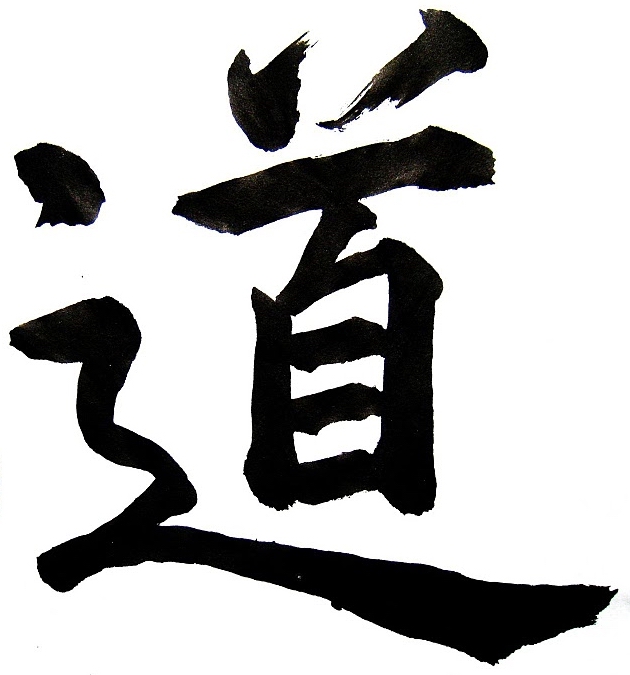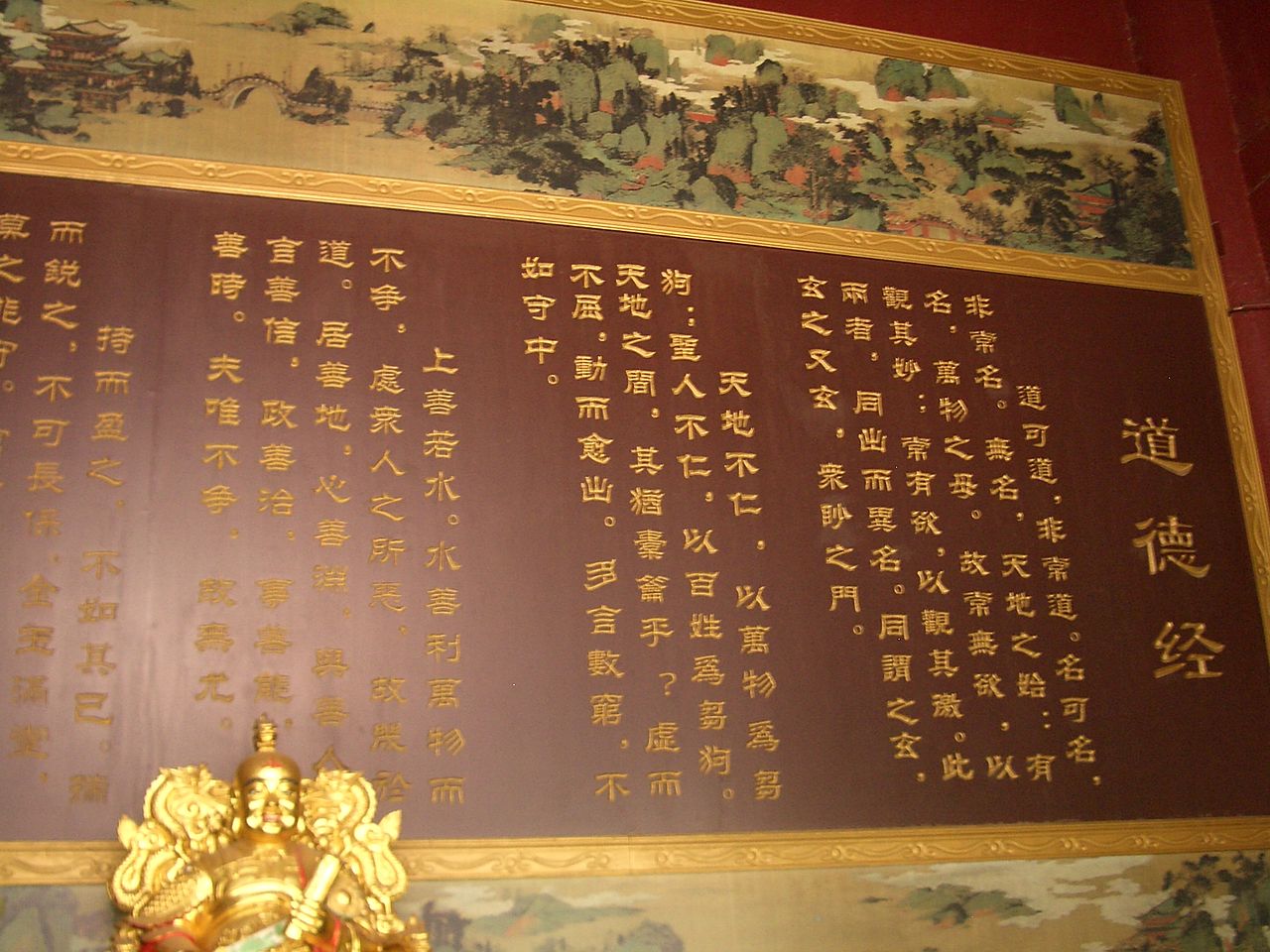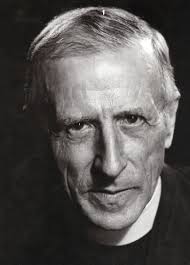T
| Tao Te Ching | |
| Taoism |

The word "tao" is usually translated as "way", "road", "method", "technique" or "principle". As a concept, Tao is the most important topic in the philosophical Taoism (tao-chia). The Chinese character for tao is made of 2 signs: head and foot or walking. That is the conscious walking or the ancient (way of) walking. In Tao-te ching, Tao is the name given by Lao-tzu to the Great Pervader or the Mother of all Things. Tao is the creator and sustainer of everything in the Universe. It is described as follows:
There was something undefined and complete, coming into existence before Heaven and Earth.
(Tao-te ching, chap. 25, Legge).
Tao is the model of conduct to be followed by the Taoist disciples and it is linked with wu-wei (non-doing) and wu (emptiness) in this respect.
You may imagine that you are outside or separated from the Tao and thus able to follow it or not to follow; but this very imagination is itself within the stream, for there is no way other the Way (Tao). Willy-nilly, we are it and go with it.
The word "tao" points further to the special skills of some people such as: a good archer, musician, painter or writer etc. The skill itself was called a "tao" as much as Chinese sovereigns showed very much interest in these persons - they were invited at the court, put to the test, and rewarded properly when they proved their skill. Finally, the Tao concept may be found at Confucians as well. In this case it points to the art of ruling of the ancient Chinese.
As it is said Tao literally means "the way," but can also be interpreted as road, path or doctrine. Wing-tsit Chan Wing-tsit Chan (1901-1994), a Chinese scholar and professor best known for his studies of Chinese philosophy and his translations of Chinese philosophical texts, stated that Tao meant a system of morality to Confucianists, but the natural, eternal, spontaneous, indescribable way things began and pursued their course to Taoists. Cane, Eulalio Paul, author of the work, Harmony: Radical Taoism Gently Applied asserts Tao can be roughly stated to be the flow of the universe, or the force behind the natural order, equating it with the influence that keeps the universe balanced and ordered. The flow of ch'i, as the essential energy of action and existence, is often compared to the universal order of Tao. It is often considered to be the source of both existence and non-existence.
![]()

Tao-te Ching is the most famous and translated work from the Taoist inheritance. Its traditional author, Lao-tzu, is considered to be the father of Taoism. Even in ancient China his work enjoyed a great popularity and was glossed both by Taoists and Confucians.
The book is essentially a treatise on the Way (Tao) – a method of attaining the supreme truth in the universe. The person who accepts the teaching of the Tao practices Wu Wei, the path of non-action; understands the constant ebb and flow of change of life; and performs all actions in harmony with the universe.
The book consists of 81 short chapters among which 37 form the first part - the Classic of the Way (Tao) -, and the next 44 forms the Classic of Te ("te" is a word translated by James Legge in relation with "Tao" as "characteristics", the entire title of the book would be The Classic about Tao and its Characteristics). The philosophy of the book focuses on concepts like: Tao, Te, wu (emptiness), wu-wei (non-doing) and fu (return).
In short, concerning the Taoist sage, he should follow the Tao (or unite with it) by following its course (or emulating its conduct). In this respect, he must achieve wu and practice non-doing (wu-wei). The same is proposed to the political rulers in respect to their duties.
As for those who would take the whole world
To tinker it as they see fit,
I observe that they never succeed:
For the world is a sacred vessel
Not made to b e altered by man.
The tinker will spoil it
Usurpers will lose it.
Translation by R. B. Blakney
This short work is one of the most important in Chinese philosophy and religion, especially in Taoism, but also in Buddhism, because the latter - an Indian religion - shared many Taoist words and concepts before developing into Chinese Buddhism. (Indeed, upon first encountering it, Chinese scholars regarded Buddhism as merely a foreign equivalent of Taoism.) Many Chinese artists, including poets, painters, calligraphers and even gardeners have used the book as a source of inspiration. Its influence has also spread widely outside the Far East, aided by many different translations of the text into western languages.![]()
Taoism is an ancient mystical tradition, said to have been founded by the Chinese sage Lao Tzu. According to Taoism, each human being is a reflection of the entire universe. Both the universe and its inhabitants are subject to the same divine law of the Tao. To live according to the Tao is to live in harmony with Nature, heeding the flow of yin and yang energies, which are the very basis of life. Traditionally, Taoism has been attributed to three sources, the oldest being the legendary 'Yellow Emperor', but the most famous is Lao Tse's Tao Teh Ching. The third source is Chuang Tse's (untitled) work.
There are several kinds of Taoism. The most known is the religious Taoism. It has gods, and rituals like any other religious system. There are also many mystical schools that follow esoteric disciplines in search of longevity and immortality, most of them dealing with alchemy recipes and breathing techniques.
Taoism – ancient, mysterious, charmingly poetic – born amidst the shining mists that shroud civilization’s earliest beginnings, is a living manifestation of an antique way of life almost vanished from the world. For people who recognize the holiness of nature and desire that spirit should triumph over the black onrush of materialism, it is a treasury wherein, amidst curiously wrought jewels of but slight intrinsic value, are strewn precious pearls and rare, translucent jades. Folklore, occult sciences, cosmology, yoga, meditation, poetry, quietist philosophy, exalted mysticism – it has them all. - John Blofeld, Taoism.
Taoism is a way of life, which tries to accommodate the tendencies of nature. But this approach is not a pure return to Mother Nature, so familiar to our New Age ideology. Rather it is a wisdom acquired by simply observing the flow of natural of things.
Everything we know about tao-chia Taoism - its concepts and ideas - come from Tao-te Ching (The Classic of Tao and Te) ascribed to Lao-tzu. This book explains what is Tao (the basic topic of tao-chia) and what should be the Taoist disciple's conduct in order to follow the Tao, which is his/her main goal. Chuang-tzu further developed the ideas of Tao-te Ching by means of short stories, most of them fictitious, parables and metaphors. There's also the Lieh-tzu's Book of the Perfect Emptiness and the text on Yang-tzu which ads more hints to the oldest basic stratum of the Taoist works.
![]()

Pierre Teilhard de Chardin was a famous French philosopher (1881-1955) known for his theory that man is evolving, mentally and socially, toward a final spiritual unity. He was also trained as a paleontologist and geologist. He took active part in the discovery of both Piltdown Man and Peking Man.
Marie-Joseph-Pierre Teilhard de Chardin was born on M ay 1, 1881 into a French country gentry’s family. His mother was the great-granddaughter of a niece of Voltaire. His father was the manager of various farming estates and a historian and naturalist besides. Teilhard was the fourth in a family of eleven children living in Auvergne, France. His parents sent him in a Jesuit school when he was ten years old, and it was on there that he found his talent for study in the fields of geology and mineralogy.
Physically his effect on people seems to have been one of impression rather than of appearance. He had grey eyes and a tall thin figure. All who met him agreed that he radiated a sense of goodness, almost of holiness, but with a strong sense of humor. His reverse and apartness are best described by himself “I have the curious impression of having lost the faculty of taking pleasure in, or desiring anything at all with regard to myself, while at the same time, I am continually dominated by the supreme grandeur of the universal enterprise in which we are all engaged by the fact of our existence. It is a kind of impassioned indifference, in which all human interventions of ambitions are noticeably non existent”. Thus, he describes an occultist’s detachment, so necessary for true perspective.
I submit that the tension between science and faith should not be resolved in terms either of elimination or duality, but in terms of a synthesis. For neither can develop without the other. -Teilhard de Chardin.
He coined the words “biosphere” and “noosphere” to convey a layer of living things and a layer of thinking beings. “Noosphere” was coined in 1925 to denote the sphere of mind, as opposed to the biological sphere of life. It acts as a transformer in furthering hominization. “Hominisation” “ is another coined word which denotes the process by which the proto-human stock evolved into the more truly human, which is still realizing more and more of its possibilities.
Teilhard calls the final focal point where the material and the spiritual converge “Omega point”. Omega is a final condition. It is a mode of organization beyond which humanity cannot as yet pierce, although ESP may be a clue to the ultimate final condition. He said, “We are not human beings in search of a spiritual experience. We are spiritual beings having a human experience”.
![]()
![]()











